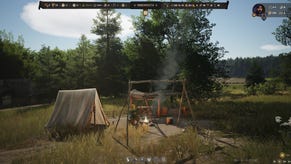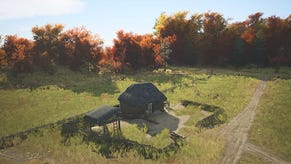Last Epoch tips for Diablo 4 refugees
Are you a Diablo 4 player who’s interested in Last Epoch? Well, this may just be the thing you need to get you to check out the latest ARPG sensation.
Last Epoch is finally out of Steam Early Access. The game arrives at a time when the ARPG genre is somewhat stagnant. Blizzard has been driving players away from Diablo 4 lately with frustrating and unrewarding season mechanics, a delay to the long-awaited dungeon ladders, and a rise in obscene microtransactions.
There’s no word yet on when Path of Exile 2 will be released, and Diablo 4’s first expansion is months away. All of this makes the end of February a great time to branch out of those established greats and check out a newcomer that’s been in the oven for years.
This piece mainly addresses Diablo 4 players, many of whom are looking to decide whether or not Last Epoch is a game they can get into. The tips and insights below, however, will be useful for everyone. So let’s dig in.
You can play Last Epoch offline
It’s probably a sign of times to have to celebrate a game offering such a basic feature as being able to play it without an internet connection, but here we are. ARPGs in particular have trended more towards live service in recent years, with many of them being outright unplayable without an internet connection.
We’re not going to dig into the hows and whys, but suffice it to say, the simple option to play offline is something we’ve been missing. Last Epoch corrects that, launching with an offline mode from the off. You obviously won’t be able to transfer characters between the online and offline realms, but you sure can launch the game in a fully offline mode and never have to even pretend there’s an online component - should you want that.
The character creator page clearly marks which option you’ve chosen, so there’s no confusion on where your characters will live.
Dying in Hardcore sends you back to normal mode
When it comes to interesting additions that offer something the competition doesn’t, Last Epoch has a very cool feature that makes creating a Hardcore character an easier pill to swallow. Traditionally, the risk/reward that comes from playing in Hardcore is that when your character dies, it’s gone forever.
This has pretty much been the accepted standard. But it’s not necessarily the end of the road in Last Epoch. When your Hardcore character dies in this game, it gets transferred to the standard mode with all of its equipped items, along with whatever it had in its inventory at the time.
Crucially, however, this does not include Stash - which makes sense, as it could mess with the balance if you manage to bring more of your min-maxed items to the general pool and share them with your other characters.
Still, it’s good that all the time you poured into your Hardcore character won’t be erased upon death, which is especially cool given that you can’t change class Masteries.
You can create Infinite Stash tabs
If Diablo 4 is the only major ARPG you’ve played, it may be hard to believe that Stash size has never really been a problem in the ARPG genre. That was mostly because a lot of those games used to offer offline modes. Once online-only and live service became the norm, however, things like Stash suddenly started racking up server costs, so games either offered them for money, or didn’t at all.
Last Epoch has no such limitation, and its Stash system is one of its most straightforward. The game lets you create as many Stash tabs as you like. In fact, you can categorise them, split them into pages and really organise your collection any way you see fit.
It may be a small comfort, but it’s one that’s going to come in very handy once you hit the endgame. Even if you’re a casual player who was never really bothered by Diablo 4’s limited Stash space, it’s good to know that you have room to grow if you need it.

There’s an impressive loot filter, and you don’t even need to be an expert to use it
On the subject of features that continue to be missing from Diablo 4: a loot filter. Very simply, having a loot filter is something most ARPGs offer because it allows players to hide trash items they have no use for, and only pick up what they believe have any value.
It is very common to get plenty of common drops without any affixes or suffixes in those games, but you don’t have to clog up your inventory with them if you never see them in the first place, and therefore have to pick them up. This is something Diablo 4 really needs to get on, especially since it already has its own problems with loot and itemisation in the end game.
But the complexity and options every game’s loot filter offers vary, so Last Epoch just, well, it has all of them. The loot filter in this game not only lets you exclude items based on rarities, you can opt out of seeing certain gear pieces altogether, hide loot for other classes, and set your own rules and tiers.
The best part? If you find all of this too complicated, you can simply copy someone else’s loot filters into your own game! I expect many Last Epoch players will share their own creations targeting specific classes/playstyles etc. in the coming days, so definitely make use of that if you don’t want to dive in yourself.
Selling loot is a bit useless
If you’re coming from Diablo 4, you’re probably used to dismantling the good loot to gain crafting materials, and selling everything else. This is not necessarily what you should be doing in Last Epoch. As you’re going to quickly find out, the gold you get from selling your loot to vendors is very much a pittance, regardless of how valuable or rare it is.
This is why the best thing to do instead is to keep the items you like to Forge later, especially if their Forging Potential is high. It’s also not always a good idea to dismantle items. Doing this in Last Epoch requires Runes of Shattering, which are expensive, so you really want to save them to shatter items that have a lot of affixes/suffixes you actually like.
An ideal way to get the best of both worlds is to make use of the loot filter we touched on above. Last Epoch is a game that will shower you with loot, but seeing as a lot of it will be useless to you, try experimenting with only seeing Magic items and above, for instance.
Long-term, the best way to optimise your build will be done almost entirely through the Forge - the game’s crafting system. Don’t expect to do the Diablo 4 thing of farming bosses for hours and hoping for a great drop, this is a game that wants you crafting and customising the gear you need yourself.
Respecing is easy and experimentation is rewarded
One of the very first things Last Epoch teaches players is how malleable the experience can be. This also extends to the investments you make in skills and upgrades. With the exception of your chosen class Mastery, everything else can pretty much be reset if you don’t feel like it’s working out for you.
Abilities, passives, skill upgrades and more can all be zeroed at the press of a button, which pushes you to take risks and experiment with builds you may not otherwise pick. Diablo 4 recently updated its own respec system, but considering how complex skill trees can get in Last Epoch, we’re glad to see the game being so open to player experimentation from the get go.
There’s a nice and large Respec button on the page, so it’s hard to miss. As for your passives (Mastery Points), simply visit Chronomancer Lerinne at any of the major towns; she’s the one with the exposed brain icon.
On the subject of skills…
You can make a skill better by using it more
Last Epoch has a neat system that rewards player investment by offering greater upgrades to the skills you use the most. This is called skill specialisation, and it basically boils down to each skill having its own skill tree.
You can only assign a limited number of skills to specialise in (though switching them up is easy), but when you do, you get to unlock a host of options that either enhance existing effects for any given skill, or alter the skill itself in ways you may not have even expected.
This is one of the game’s more interesting ways of making what could otherwise be mundane skills more exciting, so definitely spend a little time looking at the different ways your favourite skill can evolve by viewing its own tree.
There’s an overlay map
This is more of a general PSA for Diablo 4 players, since that game is one of the rare ARPGs out there that does not offer this feature. Just like Diablo 2/3, Path of Exile and most games in the genre, Last Epoch also lets you overlay the area map on top of your screen.
This is especially useful when you’re trying to quickly navigate to somewhere specific, and is a great feature to have regardless. The game’s options menu lets you customise the opacity of the map, too, if you prefer yours to pop out more from the background or sink into it as you focus on grinding.
You also still have the standard minimap, of course, just as you’d expect, but as a Diablo 4 player, I really didn’t think I would miss the overlay (which I relied on so much in D3) that much.









